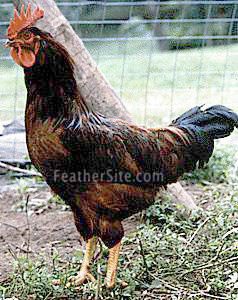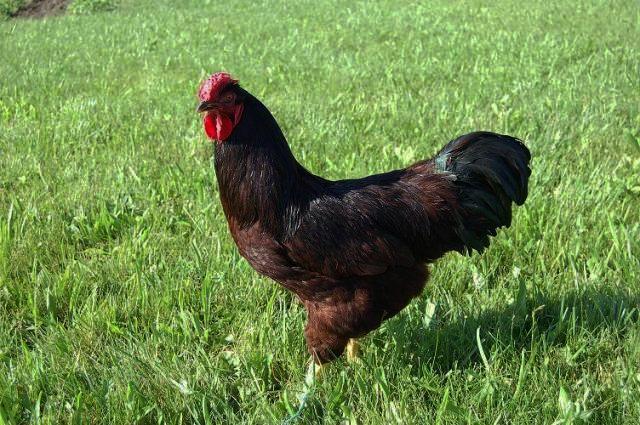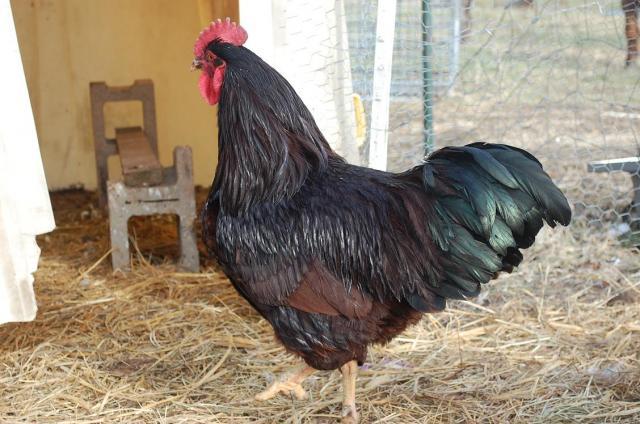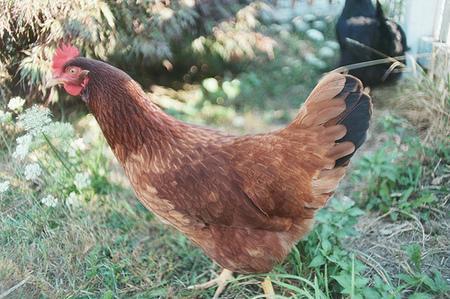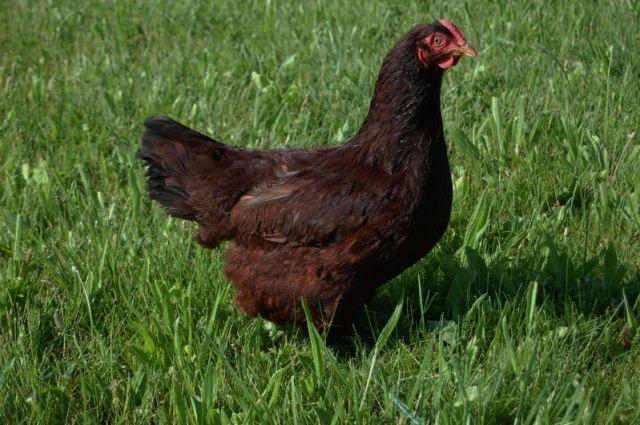I agree with all thats been said but let me stress a different part, selection. As you know there is a standard of perfection (SOP) that dictate the ideal specimen for each breed. A hatchery may at some point have acquired stock from a reputable breeder to initially start their flock. Keep in mind that breeder would never have sold their best stock, they always keep it for themselves. Now in a case where a hatchery was to say we need a large amount to set up a breeding flock for our hatchery, that breeder might in turn do their breeding for the year and sell the hatchery all their culls, they would be the cheapest for the hatchery to buy and they would need alot. So the hatchery ends up with leftovers for a base flock.
A breeders flock however is created/maintained completely differently. The breeder gets a hold of stock that follows the standard and is clear from dq's(or at least nothing major) from another breeder, who is often times met at a local poultry show, or through a breed club, or a local feather fanciers club. They breed as many chicks from their original stock as they are able to grow out. In the case of long maturing dual purpose fowl like orps, wyandottes and RIR, they may have the majority of those birds for over a year. They will cull relentlessly for disqualifying defects, which can be wide ranging (white legs instead of yellow, rose comb instead of single comb, wrong colour). The major DQ's are somewhat easy and you can often pick chicks out for alot of them, and have many of the most noticeable ones out of the flock by say 3 months. A good breeder will make sure that those DQ carrying birds don't end up in peoples flocks on accident and get breed to show birds. The rest that are left out are following the SOP so they have to grow out further.
So a breeder who wants to keep the best birds for breeding can end up feeding a large amount of birds for a full year before culling again. The breeder then has to look very carefully at what they have and what the SOP says they need. Needs to rate the cockerels because they are culled hardest. Many breeders only keep a couple, yet theoretically half of what they raised will be male. Some they will be able to sell with left over hens, but many will end up culled. You have to be very particular when doing final evaluation, it takes a lot of time, you look at everything, general type, color, feather type, do they have enough or too much fluff, are the legs the right color, is the comb the right size, type, color, is it balanced? are the wings carried right? is the tail to big or too small, is it carried too high or low. Is he wide enough and big enough, or in some cases, is he too big?
The breeder has to do the same to the pullets too. Though a breeder will likely keep more of the pullets, so some are a bit easier on them. Some breeders breed in pairs or trios only. They spend a lot of time matching birds up to fix flaws or improve traits. Say a rooster is incredibly typy but a bit small, no problem, pair him up with a massive hen that can use some refinement. Have a rooster that is too dark in color? Pair him with a light hen. It can go on and on forever!
A breeder raises a lot of birds, then selects only the best of those offspring to put into their breeding program for the following season. They match it to the SOP and continue on with what the bird was meant to be not what happened to come out.
A hatchery has a rough idea of what that breed is supposed to be, they may have made the effort to get somewhat proper stock to begin with. And as a result, the offspring are rooughly what they are meant to be. What they miss are all the little things... They missed when that wrong comb type poped up, or where the feathering went on some of their feather footed breeds.... Some of it is just natural selection. Sure that hen is a bit smaller then average, but she lays alot, almost twice as much as the average hen for that breed, so in the resulting generation, she will have more chicks then the other hens, and may pass on that faster laying trait. Same thing can happen with the males, you have a big fluffy, massive bodied roo that is truer to type then his closer feathered leaner brother, but hes faster, and doesn't have all that fluff holding him back... So he fathers 3/4 of the chicks and the better roo only gets 1/4.... This type of thing happens all the time in nature its the classic survival of the fittest.
It's our job as breeders to keep the balance on what nature intends and what needs to happen to have a classic bird. At some point a breeding group of chickens can move out of the acceptable realm of a breed standard and no longer be considered that breed as per the SOP. But to someone who is new to chickens and just starting out with their first "pure bred chickens" they may not realize that their buff rocks stopped being rocks when they had white legs... Dosent make them any less of a bird, just makes them not up to standard. Dose a backyard hobbiest need pure bred show quality birds to put eggs on the table, heck no! If all they are looking for is eggs, go to the nearest feed store and get some chicks there, they produce well and are well suited to your area.
BUT....
Speaking from experience having come from the hatchery stock (specifically barred rocks), I went as a kid to my first poultry show, all excited that Henrietta (ya i know original, but i was a kid), my favorite and prettiest hen was gonna win me a ribbon. Imagine my shock comming in the next day to see her at the bottom of her class! Whats more is that the hens next to her (of exhibition quality) were gigantic! Thats when a nice fair director talked to me and my dad about how there are differences between sources, and its all about what you want to do with your chickens that decides where you want to get your stock from.
For me, I like to breed, i like eggs, and i like to breed to the standard even though i don't show often. It gives me a goal so when i raise 100 chicks, i have something to go off of to decide why i cull 3/4 of what i raised, and know that i am helping to keep the breed the way it was envisioned to be.
But for my neighbour who just wants a flock of pretty chickens to get assorted eggs from, why would he want to pay $6+ per chick from a breeder that are straight run (which means he'll loose half to being males) He'd be better off getting a fancy breed assortment from a hatchery that will send him females only and for a couple bucks a piece.
I do know other people that go to poultry sales (the breeder sales not the auctions), go around and pick out any hen that they like the looks of. They like knowing that they have to standard birds, it gives them a lot of variety (different personalities, different sizes, habits, shapes colors...ect). I put that on par with a person who buys a AKC Great dane of excellent show confirmation and fixes it as a family dog. Nothing wrong with that, they just like to have the real McCoy!
Sib



